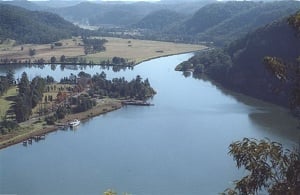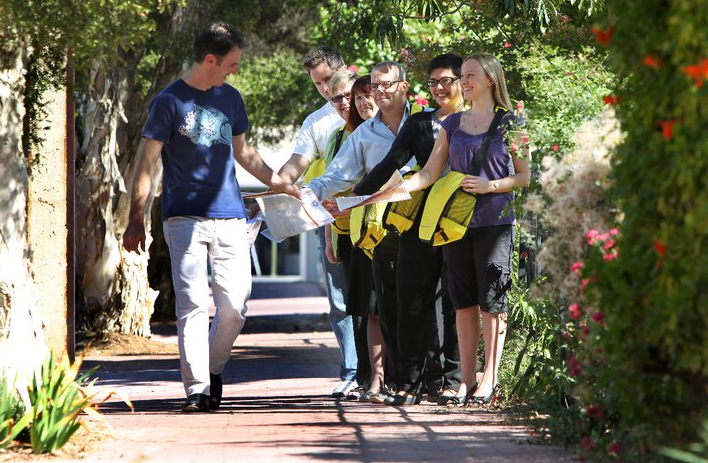By - glenn the census expert
Migration in the last 5 years – focus on Victoria
The next article in our migration series looks at the state of Victoria. This series of articles analyses the data available on the Department of Immigration and Citizenship website, to look at likely changes in the makeup of the...
economy.id ? using the infrastructure page for promotion
Forty councils and regions across Australia have now signed on to economy.id, the online economic and workforce profile. economy.id helps councils to describe, explore and promote their economy. You can see the...
Families on the Fringe – Affordability or Cycle?
On 17/10/2011, The Age reported, in what seems to be an ongoing series on housing (un)affordability, that families can no longer afford to purchase housing in the inner city. See the article “Housing Costs...
Immigration in the past 5 years – focus on NSW
My previous article on immigration looked at the national picture of emerging settlement groups, which arises from the data available on the Department of Immigration and Citizenship website. But information at...
How to get the most out of your social atlas
Most councils who subscribe to profile.id also have atlas.id. The online social atlas contains over 70 maps which allow you to see how different population groups are distributed across your LGA. But atlas.id...
Australia’s newest migrants – where are they coming from?
The 2006 Census showed that about 4.4 million Australians were born overseas (22% of the population). In the last 5 years, we have had very high overseas migration, and everyone is now awaiting the 2011 Census...
Quartiles - a technique for comparing incomes across time and place
Income data is one of the most important indicators of socio-economic status. One of the most useful analysis tools in profile.id (and also used in economy.id) are income quartiles. They enable you to compare...
Griffith and the Western Riverina economy – driven by agriculture and food manufacturing
The Western Riverina region, centred on Griffith, in south-west NSW, previously subscribed to economy.id, enabling them to track the progress of their local economy over time, and understand the characteristics...
Construction and Finance powering The Hills economy
The Hills Shire Council, in North-West Sydney, have recently subscribed to economy.id, our online economic profile. This profile shows the size and makeup of the economy and the workforce in The Hills, and how...
House sales are down, so are people moving house less often?
The Land Values Research Group, an economic blog which looks at things like monetary policy, taxation and housing investment, recently published an interesting article, which said that dwelling turnover rate is...
Census Crystal ball gazing – Glenn’s predictions for the 2011 results
Well the Census has been done, and we’ve had a lot of interest in why we’re excited about the 2011 Census and what it might show.
Hawkesbury – Sydney’s largest council by area joins .id
.id is pleased to welcome the City of Hawkesbury, population 64,030, to the .id community! With the addition of Hawkesbury, all councils in Western Sydney now subscribe to one or more .id products. The...
What’s new in the 2011 Australian Census?
The 2011 Census is over as far as filling in the forms are concerned. Now the ABS is in full swing collecting those forms and then processing the data, and then it will be our turn, converting that data into...
So this is Census day!
Well the day is finally here! The one day every 5 years we get to fill in our Census forms and contribute to the statistical picture of the nation for the next 5 years. Whether you’re submitting your form by...
The Census time capsule – Your chance to be a part of history
The 2011 Census, like the 2006 and 2001 Census before, gives respondents the opportunity to have their details kept for 99 years with the National Archives of Australia to be released in the 22nd century. Read...
Why are we excited about the 2011 Census?
The 2011 Census is just two weeks away. At .id, we deal with Census data every day, and both ourselves and our clients love the demographic stories it can tell about each suburb and town in Australia. There are...
The eCensus – completing your Census form online
For the 2011 Census, the ABS is promoting and recommending the eCensus – the option for all households to complete a Census form on the Internet. eCensus was offered in 2006 but not heavily promoted. We look at...
Are empty nesters moving to inner-city apartments?
A common demographic stereotype these days is that suburban empty nesters, whose children have finally left home, are downsizing into the inner parts of our cities, particularly being attracted to large...
Who decides which questions are on the Census?
Australia is gearing up to run the 2011 Census next month. Every 5 years Australia conducts a Census, which is a fantastic data resource, with a wealth of information for very small areas on the people that...
Who is involved in running the Census?
The Census is a massive undertaking every 5 years, which provides a wealth of information for all levels of government and private sector organisations. There are somewhere in the vicinity of 40,000 people...
What is employment self-sufficiency?
In a recent blog we looked at employment self-containment, which is a measure that looks at the proportion of residents who work locally. Self-sufficiency is the opposite side of the coin. It looks at what...




.jpg)























